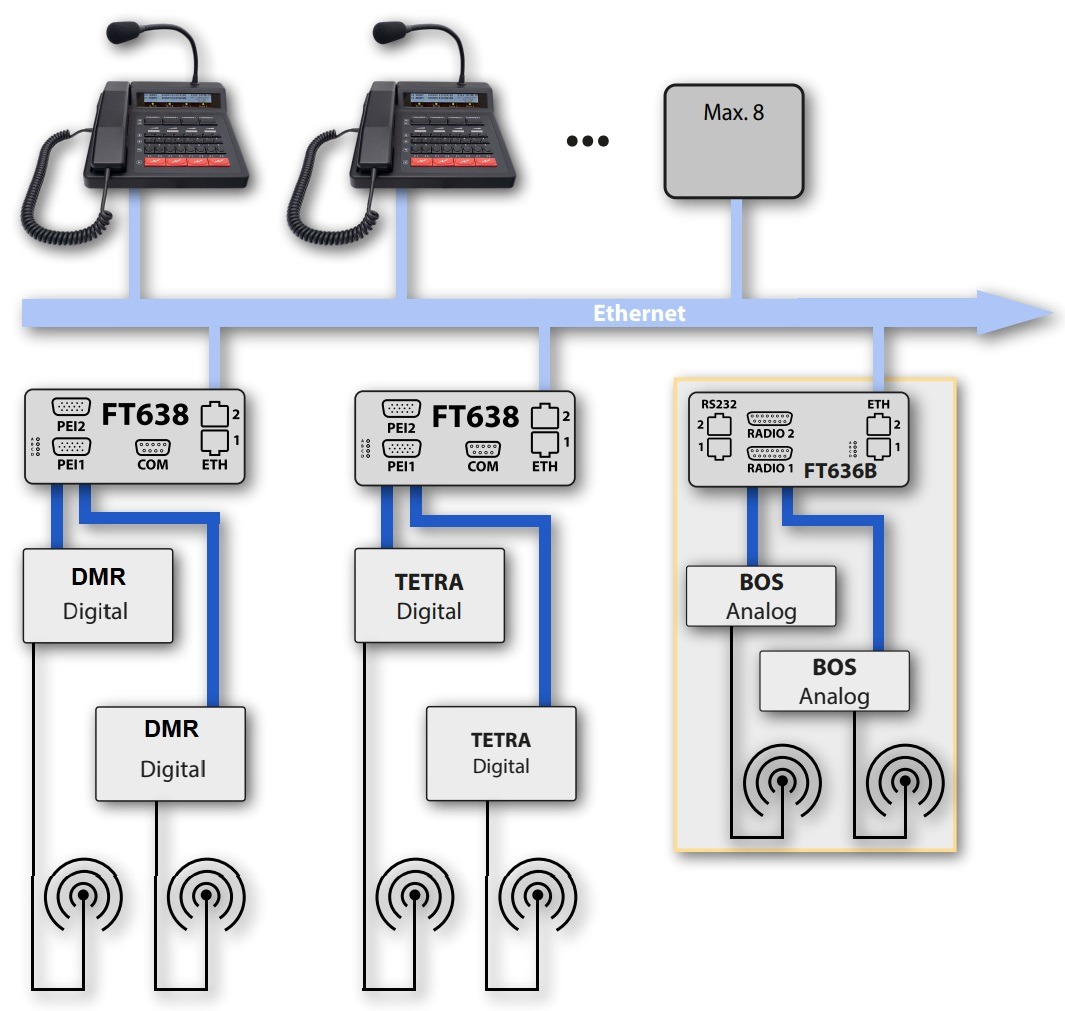
An important part of many radio networks is the dispatcher’s workplace, which provides operational control of the organisation. Dispatchers manage and control more complex technological production processes and transport systems. They also coordinate the cooperation of the working groups that carry out the sub-operations.
Dispatchers often serve larger areas that cannot be covered from a single base station, or they control several independent groups simultaneously that are served from multiple base stations. To control such a radio network, the dispatcher needs a control panel (dispatch console) that integrates the control of multiple base stations in a single device.
Reasons for deploying a dispatching solution with remote control of base stations
- The dispatcher’s workplace is often far away from the place where the communication takes place. The radio network cannot be controlled from a local base station.
- The dispatcher also often manages several different independent groups of users at the same time. He needs to operate multiple base radios.
- The base station is difficult to place on the controller’s desk, the antenna lead is too long. It is challenging to install the antenna system and the antenna lead in the building where the dispatcher’s office is located. The solution is to locate the base radio station in the technology room near the antenna system and connect the dispatcher’s workstation via a LAN computer network.
Different dispatching solutions according to customer requirements
Some organizations require a comprehensive solution that integrates all communications resources in a single device. An example of such a solution is the RV3 telecommunications service panel. Other organisations use software solutions. Examples include apps like SmartDispatch and SmartOne. Other organisations require dedicated HW equipment that is exclusively for remote control of base station radios.
Advanced dispatching solution MAJOR BOX for remote control of the base station.
An example of an advanced HW solution for remote control of base stations is the MAJOR BOS dispatching solution.
Suitable solution for larger analogue radio networks and digital radio networks DMR and TETRA
MAJOR BOS dispatch consoles are capable of controlling 4 or 8 base stations depending on the model. Up to 8 dispatch consoles can be connected to one system. MAJOR supports digital radio control for analogue radio networks, DMR and TETRA digital radio networks. The MAJOR technology enables connection of terminals from various manufacturers such as Hytera, Motorola, Sepura.
Simultaneous listening to connected base stations, loud and discrete communication
The dispatcher can listen to all connected radios at the same time and set the volume for each of them individually. MAJOR supports loud communication via microphone and integrated speaker as well as discreet private communication via handset with integrated PTT button.
Advanced features and voice recorder
In addition to basic call control, Major supports advanced features. These include, for example, caller ID display, list of recent calls with call time, call group selection, etc. On request, a voice recorder can be added to ensure recording of all voice communication for approximately 30 minutes.
MAJOR BOS uses VoIP and PoE technology
The Major BOS dispatch console is connected to the FT636 or FT638 radio interface via a standard computer network and uses VoIP voice transmission technology. PoE can be used to power the dispatch consoles and back up the console and base radios from a single source.
Interface for connecting third-party applications
The dispatching solution includes interfaces for connecting third-party applications such as support systems for fleet management, user location, lone worker safety, etc.





